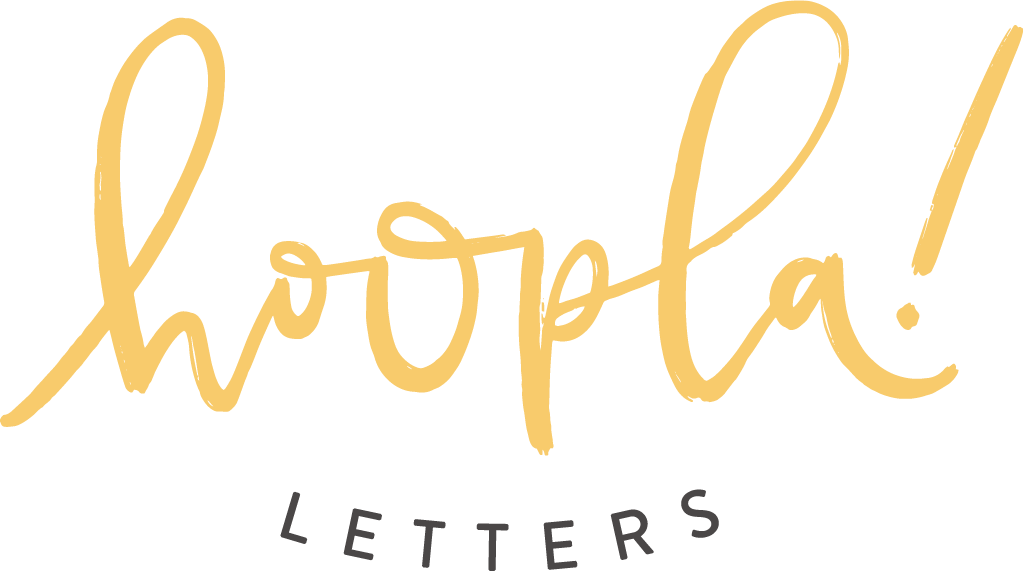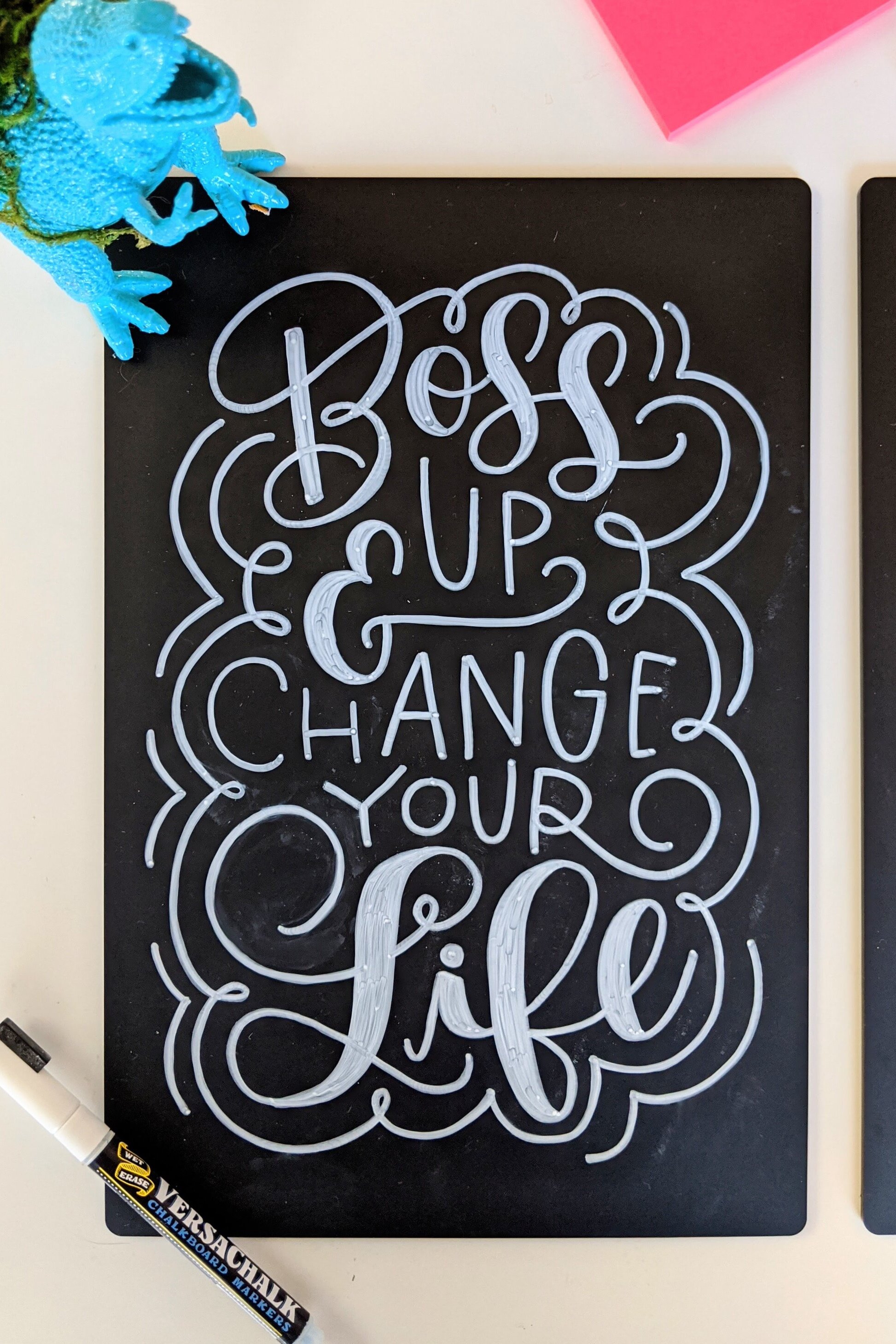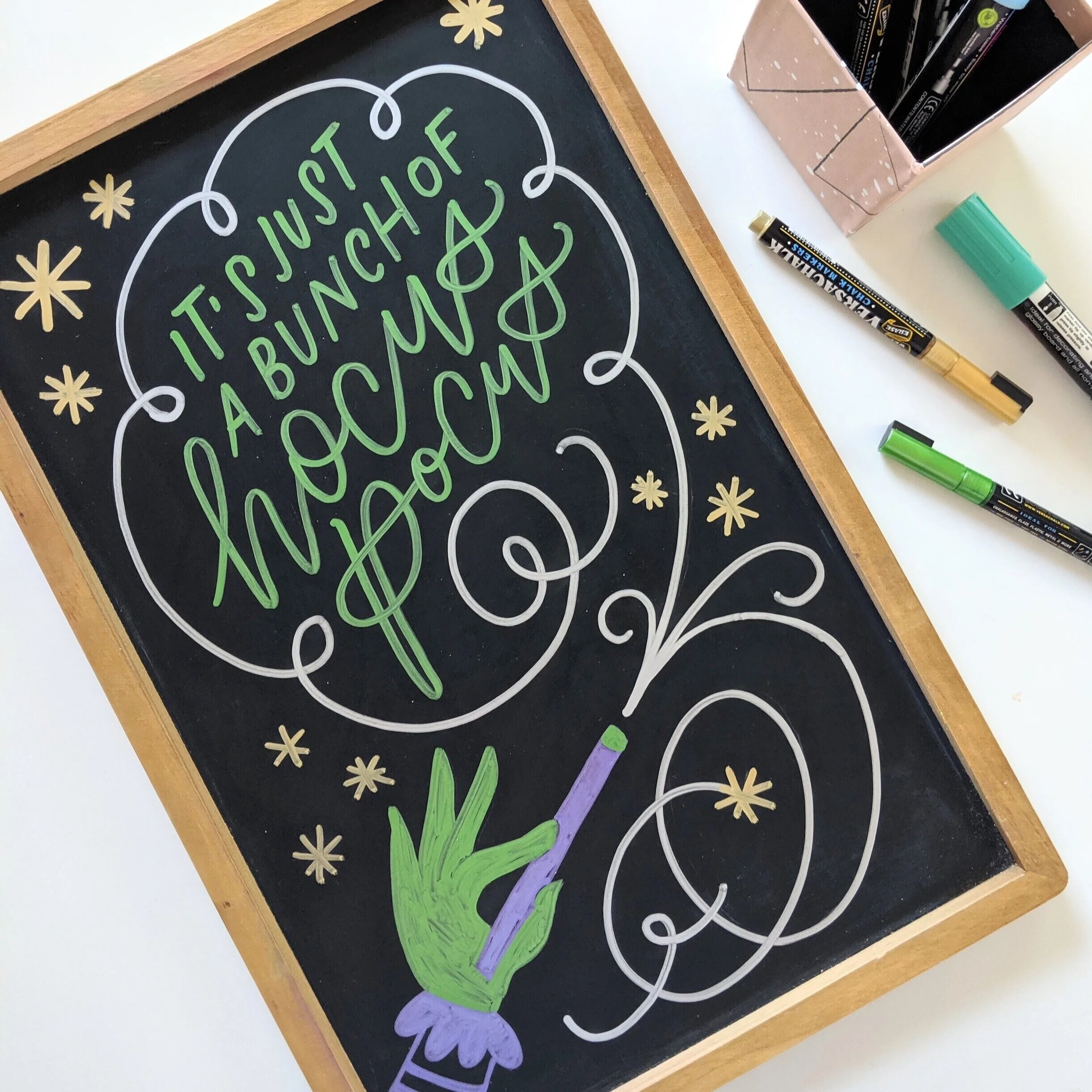How to Choose the Best Chalkboard for Your Home
Non-porous VersaChalk frameless acrylic chalkboard — my go-to board, and what I use in all my workshops!
If you’ve been following along for a while now, you know that I am a HUGE chalkboard Stan. Yes, they are a-mah-zing for signage for business owners, particularly in the food and fitness industry when offers and schedules change on the regular. But they are even better in your own home. Maybe it’s because I’m an artist or a Libra or an Enneagram 7 or some combination thereof, but I get bored easily. I like to mix things up. And with chalkboards, I totally can… and so can you!
But before you start making purchases, there are a few things we need to consider. Today, I’m going to walk you through how to choose the best chalkboard for your home… and it might not be what you think. Let’s dive in!
What’s It For?
First, let’s consider how you’ll be using this board. Is it going to be for making simple lists in your kitchen? Or a greeting in your entryway? Do you want it to serve as a focal art point? Or part of a gallery wall? Each of these scenarios requires something a bit different, so it’s best to have the purpose in mind before you make any decisions
Porous vs. Non-Porous
The most important thing to know about the chalkboard before you buy it is this: is it porous or non-porous? If the material is porous, it has teeny, tiny microscopic pores throughout. That means both air and liquid can penetrate the surface. Porous materials often used for chalkboard include MDF or plywood painted with chalkboard paint. When you find a cheapy board at a craft store, it is generally made of one of these two materials.
Non-porous boards, on the other hand, don’t have those itty-bitty openings throughout. Ain’t nothing penetrating the surface. Non-porous materials often used for chalkboards include slate, porcelain, acrylic and vinyl.
So which do you want? I HIGHLY recommend going with a non-porous chalkboard, especially if you plan on using chalk markers. If you use a chalk marker on a porous board, it’s going to seep into those pores and stain. Like, a lot. While there are some products out there that can remove a bit of it (Magic Erasers are your best bet), if the ink has been on the board for any length of time, you’re always going to left with ghosting… which means you’ll have to repaint the board every.single.time you want to update a design. I cannot tell you how many times I have been hired by a restaurant to update their chalkboard only to discover the previous artist used chalk marker, rendering the board a ghosted mess. 99% of the time after seeing the result, the client opts to repaint and we stick with standard chalk from thereon out.
So do you always need a non-porous board? Not necessarily. If you plan on using only regular chalk and not chalk markers, you can definitely make a porous board work! Which brings me to my next point…
Chalk or Chalk Marker?
Will you primarily be using regular chalk or a chalk marker for your new board? Here are a few things to consider.
Kids, pets & high traffic areas.
If your chalkboard is within reach of kids or pets, or if it’s in a high traffic area where it could get brushed against regularly, you’re gonna want to stick with chalk marker. While chalk marker isn’t impenetrable, it is pretty smudge-proof, whereas chalk… well, that’s another story. So if you don’t want a curious toddler or rowdy retriever to wipe off all your hard work, go with chalk marker.
Porous chalkboard at a local Phoenix bakery - out of reach of children and not at risk of being brushed by customers, so I went with regular chalk!
All the seasonal chalk art in my home is within reach of my toddler… so you better believe I use chalk markers and a non-porous chalkboard!
Lists/schedules/Specials.
If you plan on using this for lists, schedules or other things that will be changed regularly, I recommend going with regular chalk. Now, if you want to make that board a little prettier with a border or header that won’t need to be regularly changed, you can use both. Use the marker for the border/header and regular chalk for the list. When you’re ready to change out the list, you can erase without smudging your other design. Easy peasy!
Porous chalkboard at local Indianapolis restaurant that’s frequently updated with events and specials - a prime candidate for regular chalk! If you look closely, you can see areas where previous folks used chalk markers… and they didn’t totally come off.
Chalk wall.
If you are planning on using a chalk wall instead of a chalkboard (we’ll be doing a post on creating chalk walls in the near future!) you absolutely need to use regular chalk. Chalk marker WILL stain and you’ll be tearing your hair out. If you have kids or pets, just keep the design high enough that it will be out of reach.
New Year’s chalk wall design in a client’s private home
Type of designs.
If you plan on using templates to create a majority of your boards (like the ones I offer in the shop), you’ll want to use chalk marker. This way, you can transfer the design template using regular chalk, trace over in chalk marker and remove the sketch behind it once finished. Templates are a bit trickier to use with just chalk since removing the outline may also remove parts of your final design if you aren’t careful. If you plan on getting real artsy with it, you really can’t beat regular chalk. It gives you a texture and depth you can’t get with a chalk marker.
Bottom line: if you foresee yourself wanting to use a chalk marker at ANY point, you’ll want to stick with a non-porous board. If you’re confident you won’t use them, then the world is your oyster! With regard to chalkboards, that is.
Student in one of my workshops creating a chalkboard from a template. You can see the template is first laid out in chalk and covered over in chalk marker. Because we use chalk marker, the boards in my workshops are ALWAYS non-porous!
Using regular chalk gives you an opportunity to add shading and texture that you cannot when you are using chalk markers.It’s all about that dust, baby!
Seriously, how adorable is this VersaChalk Tabletop Folding Chalkboard? This is on the console table in my entry way, and I change it up with the seasons.
Display
Another consideration is how this board will be displayed. Personally, I’m a leaner… that is, I prop my boards up on tables and lean against walls. So I tend to stick with smaller boards with or without frames. But if you want your board on a wall, you can choose between boards that must be mounted or can be hung.
For the most part, I recommend you choose a board that can be hung and removed from the wall with relative ease. This way, you can bring it off the wall to create the design and rehang wherever you choose without worrying about whether or not you can reach all parts of it.
If you have your heart set on a board that must be mounted, that’s totally fine – just make sure it is within reach and that it’s not a part of a larger gallery wall. If not, it could make changing out the design a huge pain!
Chalkboard Recommendations
Now that we’ve gone through how to choose the best chalkboard for you, I’m going to recommend a few of my faves. Of course, these aren’t the only boards out there… I just really love them!
VersaChalk Frameless Acrylic Hanging Chalkboard. Not only is this board non-porous, but it is also double-sided so you can create one board with two designs, and just flip depending on your mood. Can be mounted or leaned. This is the board I use in my workshops!
VersaChalk Table Top Folding Chalkboard. This little guy is GREAT for entryways and console tables. I have one on the console table in the entry way of our home that I swap out with welcome messages and seasonal designs. Non-porous, so perfect for chalk marker.
billyBoards Chalkboards. If you want a custom board, billyBoards is the way to go! You can get the exact size you need, framed or unframed. Plus, most of their boards are non-porous, and many are also magnetic. I especially love the hanging system they have for unframed boards – usually, unframed boards have to be mounted, so this is a gamechanger!
Pottery Barn Framed Chalkboard, 36 x 24. Okay, admittedly, this one is a little pricey. But it’s just so pretty! This board is porous, so you can only use regular chalk, BUT it’s also magnetic, making it ultra-practical for a list making board. And because it’s so large, you can section it off with a changeable quote on one side and pictures/permission slips/coupons/etc. hanging on the other. I don’t personally own this one, but it’s on my wish list!
Hope this helps! If you have any questions about choosing a chalkboard for your home, be sure to post in the comments below. Hope you fall in love with chalkboards as much as me!








